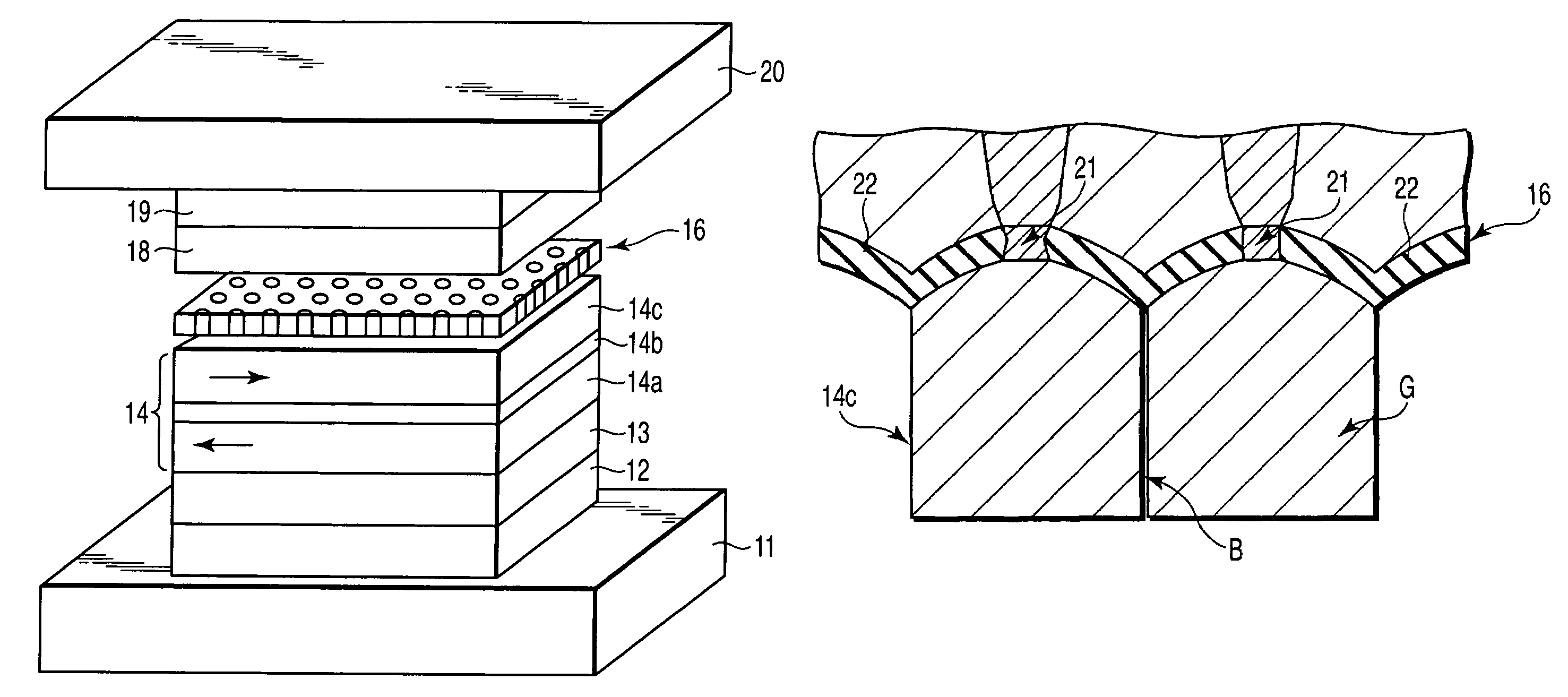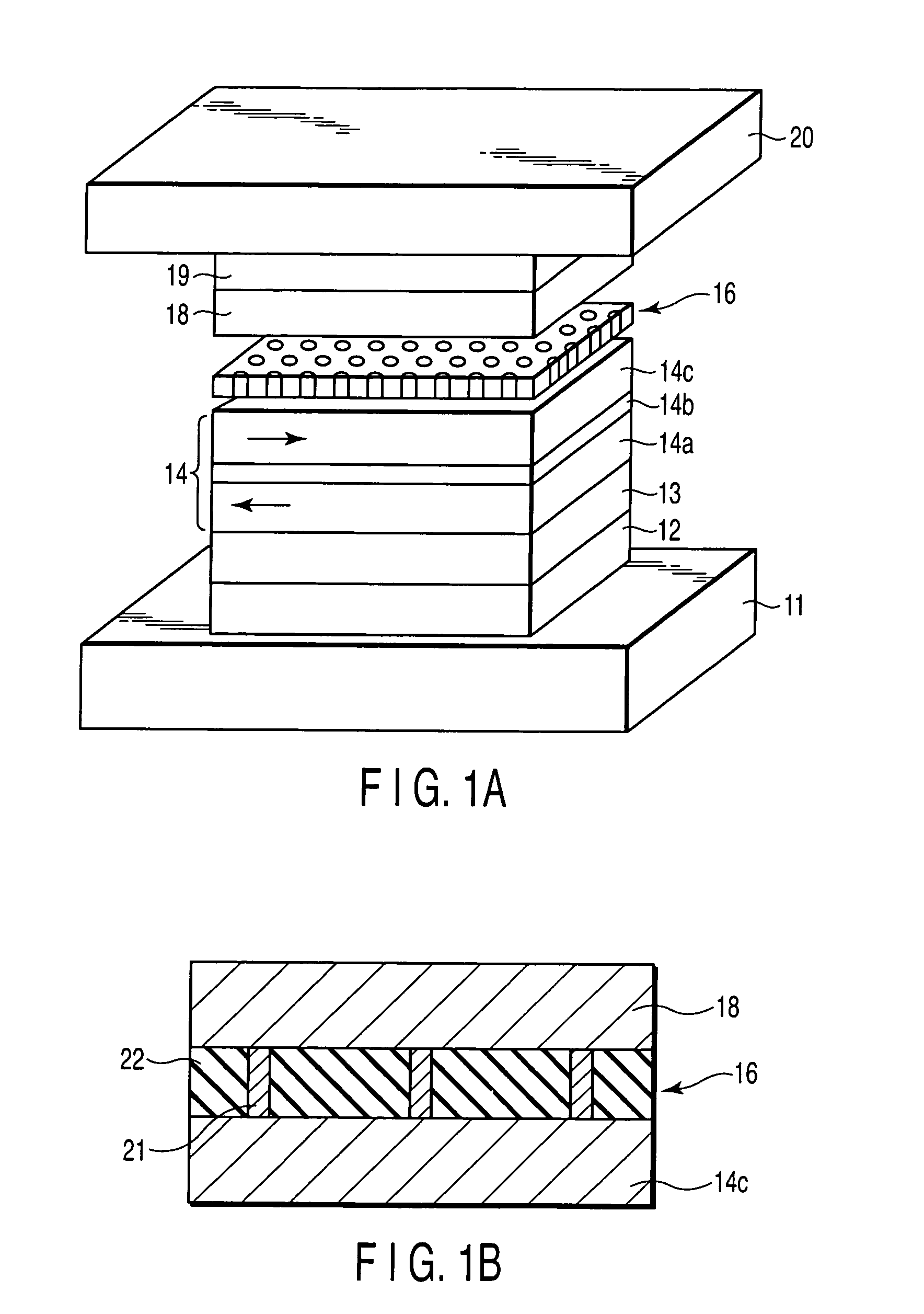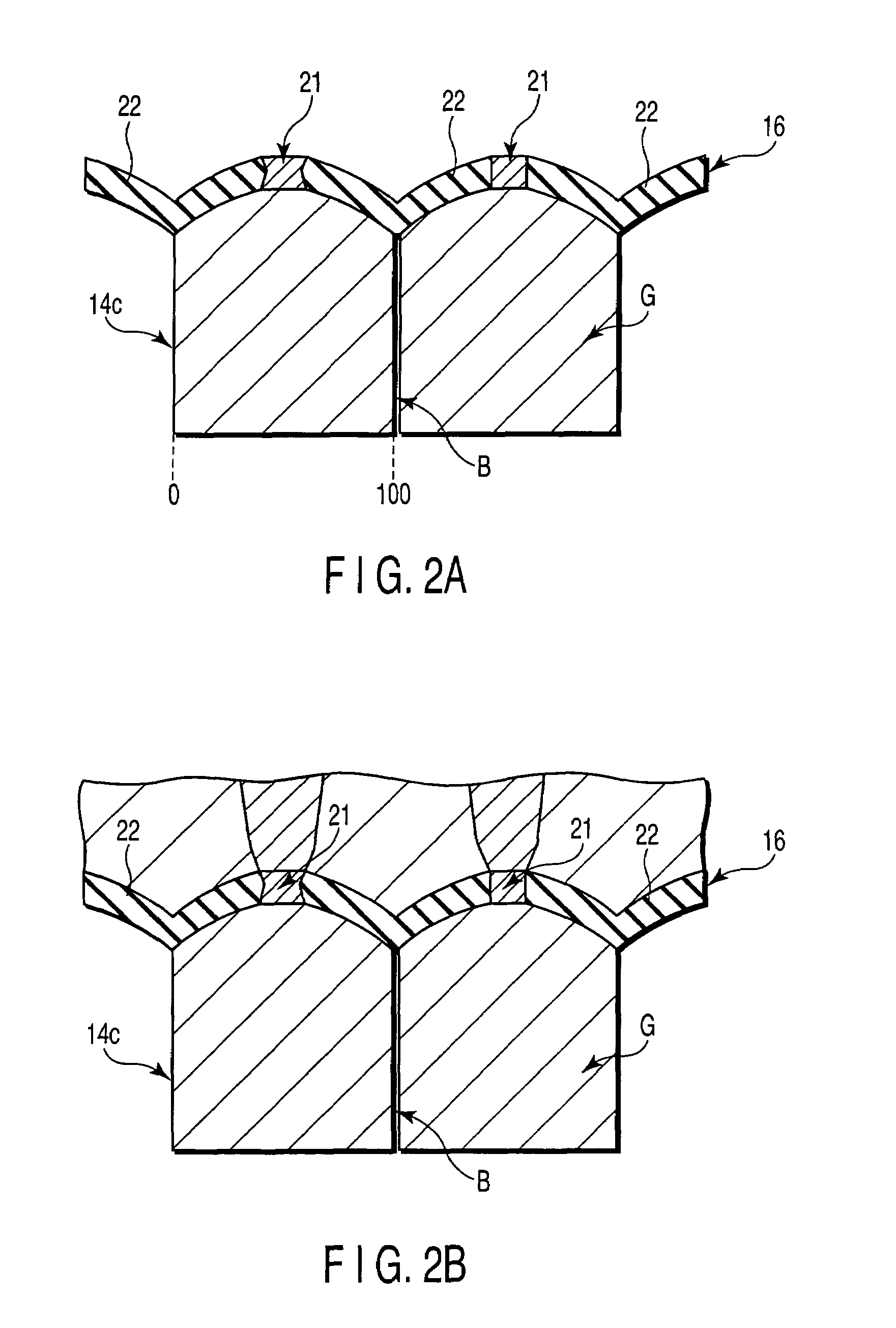Magnetoresistive element, magnetoresistive head, magnetic recording apparatus, and magnetic memory
a technology of magnetoresistive head and magnetic recording apparatus, which is applied in the field of magnetoresistive element, magnetoresistive head, magnetic recording apparatus, and magnetic memory, can solve the problems of high element resistance, insufficient metal ccp element to sense very weak fields, and difficult to put to,
- Summary
- Abstract
- Description
- Claims
- Application Information
AI Technical Summary
Benefits of technology
Problems solved by technology
Method used
Image
Examples
example 1
[0053]In the present Example, a magnetoresistive element (CCP-CPP element) having the structure shown in FIG. 1A is manufactured. Specifically, the films mentioned below are sequentially formed on a substrate (not shown):
[0054]lower electrode 11,
[0055]underlayer 12: Ta [5 nm] / Ru [2 nm],
[0056]pinning layer 13: Pt50Mn50 [15 nm],
[0057]pinned layer 14: Co90Fe10 [4 nm] / Ru [0.9 nm] / Co90Fe10 [4 nm],
[0058]lower metal layer 15: Cu [0.5 nm],
[0059]spacer layer (CCP-NOL) 16: an insulating layer 22 of Al2O3 and current paths 21 of Cu (prepared by depositing Al90Cu10 [0.9 nm], followed by performing PIT and IAO treatments),
[0060]upper metal layer 17: Cu [0.25 nm],
[0061]free layer 18: Co90Fe10 [4 nm],
[0062]cap layer 19: Cu [1 nm] / Ru [10 nm], and
[0063]upper electrode 20.
[0064]In the description below, a set of the spacer layer 16, in a narrow sense, and two metal layers located over and under the spacer layer 16 may be referred to as the spacer layer. The CCP-CPP element in FIG. 1A is of a bottom t...
example 2
[0118]In the present Example, a magnetoresistive element (CCP-CPP element) having the following structure is manufactured:
[0119]lower electrode 11,
[0120]underlayer 12: Ta [5 nm] / Ru [2 nm],
[0121]pinning layer 13: Pt50Mn50 [15 nm],
[0122]pinned layer 14: Co90Fe10 [4 nm] / Ru [0.9 nm] / (Fe50Co50 [1 nm] / Cu [0.25 nm])×2 / Fe50Co50 [1 nm],
[0123]lower metal layer 15: Cu [0.5 nm],
[0124]spacer layer (CCP-NOL) 16: an Al2O3 insulating layer 22 and Cu current paths 21 (prepared by depositing Al90Cu10 [1 nm], followed by performing PIT and IAO treatments, where the PIT / IAO treatments use similar conditions to those of Example 1),
[0125]upper metal layer 17: Cu [0.25 nm],
[0126]free layer 18: Co90Fe10 [1 nm] / Ni83Fe17 [3.5 nm],
[0127]cap layer 19: Cu [1 nm] / Ru [10 nm], and
[0128]upper electrode 20.
[0129]FIGS. 13A and 13B show cross-sectional TEM photographs of the magnetoresistive element (CCP-CPP element) manufactured in the present Example. In FIGS. 13A and 13B, a current path is formed on an almost centr...
PUM
| Property | Measurement | Unit |
|---|---|---|
| thickness | aaaaa | aaaaa |
| thickness | aaaaa | aaaaa |
| crystal orientation angle | aaaaa | aaaaa |
Abstract
Description
Claims
Application Information
 Login to View More
Login to View More - R&D
- Intellectual Property
- Life Sciences
- Materials
- Tech Scout
- Unparalleled Data Quality
- Higher Quality Content
- 60% Fewer Hallucinations
Browse by: Latest US Patents, China's latest patents, Technical Efficacy Thesaurus, Application Domain, Technology Topic, Popular Technical Reports.
© 2025 PatSnap. All rights reserved.Legal|Privacy policy|Modern Slavery Act Transparency Statement|Sitemap|About US| Contact US: help@patsnap.com



